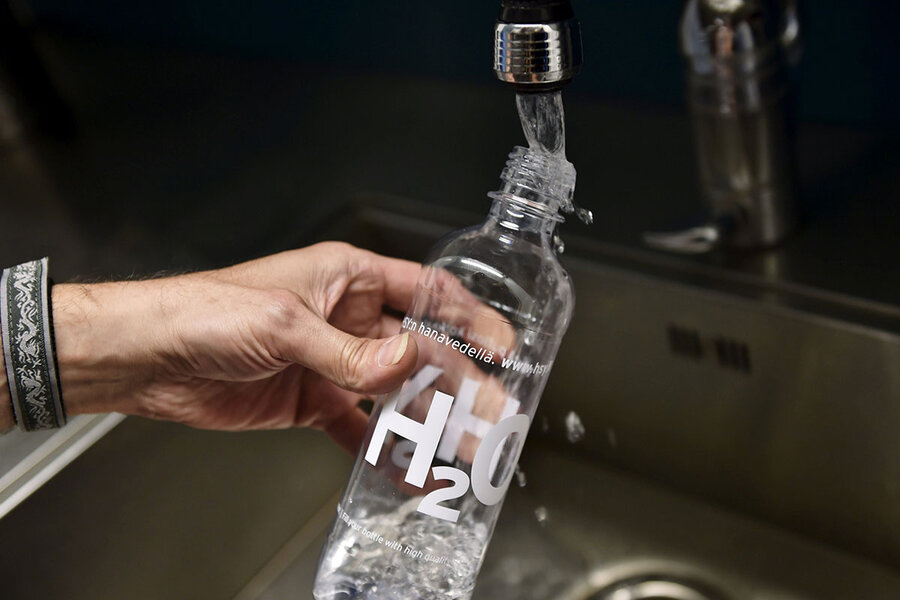Supercool: Freeze water in seconds
Loading...
We often think of 32 degrees F. as the temperature at which water freezes at standard atmospheric pressure, but, in fact, under the right conditions, water can remain liquid at temperatures as low as 55 degrees below zero. Scientists call this phenomenon supercooling.
Supercooled water is highly unstable. Jostle it, and it suddenly freezes. Pour it onto a surface, and it transforms from liquid to icy slush.
You can supercool water at home. All you need is water – distilled or purified works best – some smooth and clean containers, and a freezer. In our trial, we placed six bottles of Fiji brand water, chosen for the smooth bottles, into our freezer; set a timer for 2-1/2 hours; and then left them undisturbed. (Supercooling water is a bit like cooking rice: The more you leave it alone, the greater your chances of success.)
Why We Wrote This
Water is the most abundant compound on Earth. But even mundane materials can sometimes behave in unexpected ways.
By the end of the countdown, the liquid in four of the six bottles had turned to ice. But the other two bottles held supercooled water. When that water was disturbed, icy filaments spread through the water from top to bottom, freezing it in seconds.
How does it work? For a liquid to transform into a crystalline solid, it needs a nucleation site, that is, a place for the crystals to start forming. If there are impurities in the water, the crystals will form around them. But if the water is pure, it will remain liquid well below its freezing point. Disturbing the bottle forces a few molecules to line up in the right way, and that seeds the ice crystals.
Supercooling water isn’t just a fun project to try at home. Experiments with supercooled water have helped researchers develop a better understanding of the bizarre properties of the most abundant compound on Earth.
But if this sounds like too much work, there’s one other way you can see supercooled water: Look up. Altocumulus clouds, a type of mid-altitude cloud, contain water droplets that have been supercooled to 5 degrees below zero.
This column first appeared in the Sept. 4, 2017 edition of The Christian Science Monitor Weekly magazine as part of the Monitor's occasional Science at Home series.








